|
46. Cacyreus marshalli (Butler 1897) / Geranium bronze / Lycaenidae – Polyommatinae
NL: geraniumblauwtje / D: Pelargoniumbläuling / F: brun du pélargonium
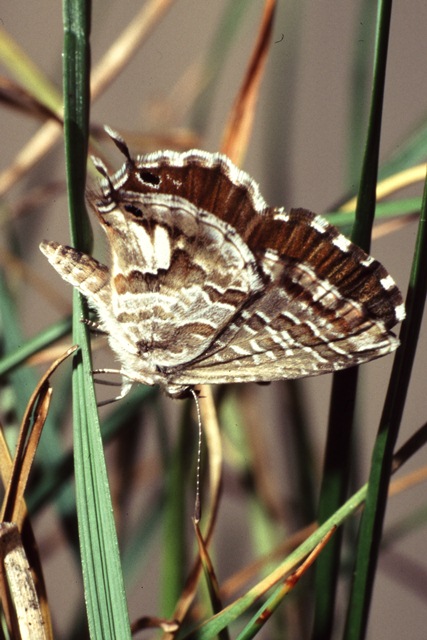 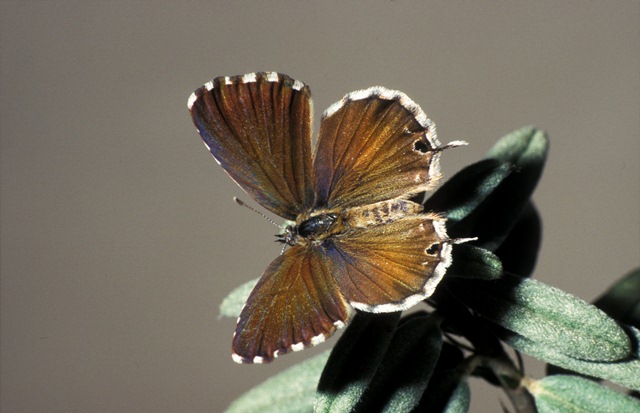 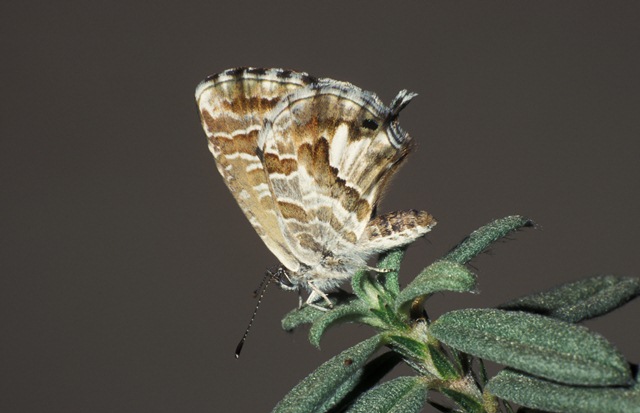
Photographs: Frits Bink ©.
The sightings were from mid-July until mid-October. The species is recorded from Mediterranean and sub-Mediterranean climates in South-Africa and Europe, its required heat sum is 2000°d and the maximum 3300°d and winter survival is possible if the temperature remains above 8°C, which equates roughly to the conditions under which Pelargonium (its host-plant) can survive. In Europe the species is recorded from maritime climate, amplitude 5 to 9, and climate windows of 38 weeks and whole year open. In South-Africa it is a common species in the parks of the big cities where geraniums cultivars are planted. These may be the source of the strain of this butterfly adapted to use cultivated geranium species (Clark & Dickson 1971).
Around 1977 the species had been imported and it was already recognized by the Plant Protection Organization. The first butterfly was seen in Sussex, England in 1997.
Around 1990 the species became a pest in geranium nursery gardens on Majorca, where it was first seen in Europe, and ten years later it had spread around the whole western part of the Mediterranean up to southern France. It is very successful in finding nearly every geranium in the countryside and urban areas.
Ecological characteristics
Behaviour over time
Overwintering: young larva inside the soft stem of a Pelargonium.
Reproduction: oviposition starts after about 6-8 days when the body contains about 34 eggs, estimated production 3 times as much.
Larval feeding periods: the whole year round, 3-4 weeks in summer, up to 13 weeks in winter.
Generations: 4-5 in Mediterranean climate.
Spreading of risk: its nomadic lifestyle and migration behaviour enables this tiny butterfly to live in unpredictable environments.
Life cycle: egg 4-6 days; larva 22-33 days; pupa 9-13 days.
Life span of adult: rather long, 3 weeks.
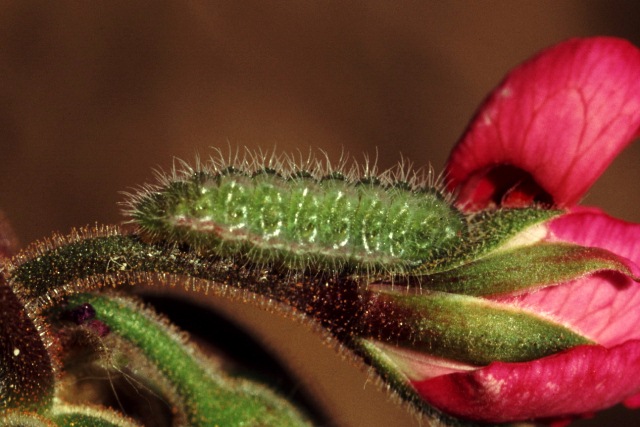 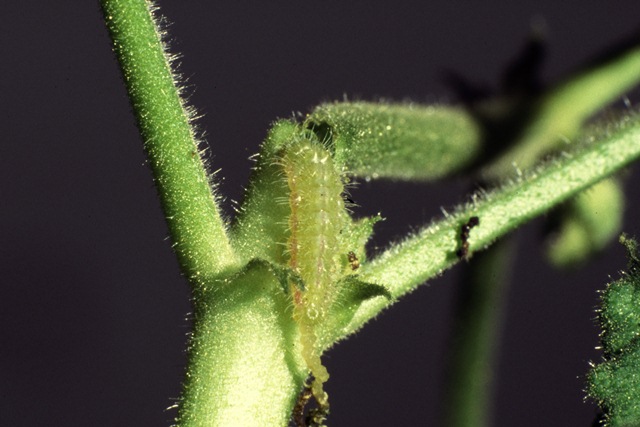
Photographs: Frits Bink ©.
Behaviour in space
From stay-at-home to migrant: nomad, spatial requirement in Mediterranean climate modest.
Finding a mate: congregation of males and females in sheltered spots.
Orientation in the landscape: in Europe both countryside and urban areas are utilised and nearly every Pelargonium in a border or window box will be found by ovipositing females in the coastal area of eastern Spain.
Oviposition: egg are laid on buds, young flower heads or leaves.
Defence
Threats from other organisms: the larva is hidden inside a flower or stem, the adult is very small, so danger by predators is probably very little.
Myrmecophily: none, larva lacks the myrmecophily organs and has only four larval stages (Clark & Dickson 1971: 60-61).
Threats from the environment: the butterfly is active under hot and dry weather, so they can endure heat and drought but not cold.
Feeding habits
Adult: nectar of small flowers.
Larva: preferred food is the young fruit, in a flower head all parts are utilised, the larva is also able to develop fully on leaves. Small larva often bores into a young stem where it eats the flesh. (This is the reason that inspections of pot plants will often fail to discover the species).
Larval foodplants
Plant species: Geraniaceae: Pelargonium zonale, Pelargonium spp.
Journal
Observations in Alicante, Spain:
1 December 1997: larvae in all stages on potted geranium in the market of Altea, altitude 65 m.
9 April 2014: two larvae 8 mm in length on potted geranium on a balcony in Bemissa, altitude 90 m.
12 April 2014: oviposition at Camping Capblanc, 13 m, also damage seen on flower heads of the potted geraniums.
Table 46-1. Results of dissections

Table 46-2. Collection and observation localities
Collection and observation localities:
E, Albir, Capblanc 13 m, 38° 34’ 44”N – 0° 03’ 54”W; 4 February 2005, 12 April 2014.
E, Altea 65 m, 38° 35’ 56”N – 0° 03’ 05”W; 1 December 1997.
E, Bemissa 90 m, 38° 40’ 34”N – 00° 05’30”E; 7 April 20014.
Fig. 46-1. Cacyreus marshalli, designed phenogram from Benelux observations.
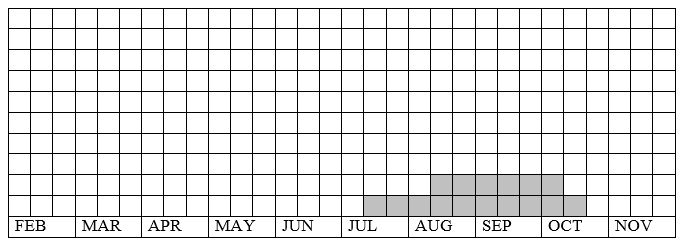
Fig. 46-2. Cacyreus marshalli, habitat characteristics.
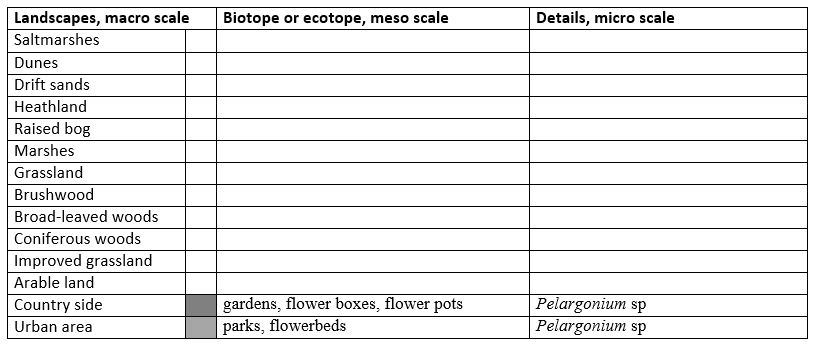
Fig. 46-3. Cacyreus marshalli, climate matrix, heat-sums 2000-3300°d, January +8ºC.
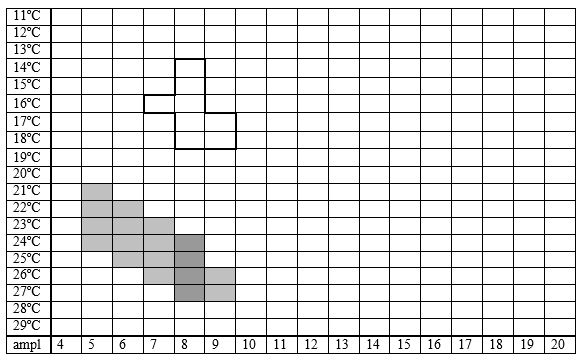
|










